
STUFF FROM THE LOFT - Dave Dye
Dave DYE
Creative advertising bloke Dave Dye talks to ad legends about their careers, creativity, communication and also stuff that doesn't begin with the letter 'c'.
- 2 hours 3 minutesJOHN LLOYD
Whatever happened to funny ads?
Have clients stopped buying them?
Or have agencies stopped writing them?
They used to dominate the ad breaks.
Humour was the first tool you reached for after being handed a brief.
Why? Well, as that Poppins women says ‘A spoonful of sugar makes the medicine go down’.
Actually…did they dominate ad breaks?
Maybe I’ve slipped on my rose-tinted specs again?
I reach for an old D&AD Annual.
Randomly, I pick up 1991’s.
34 tv and cinema ads featured; 28 were funny.
Of the 28, the most awarded were for Barclaycard and Red Rock Cider.
They feel slightly odd today.
They aren’t ‘advertising funny’, they’re actually funny.
In a way that I can’t imagine them popping up between Bake Off?
I don’t know whether it’s because they don’t take the product very seriously? Some even make fun of it. (Imagine; making fun of the very people who pay the bills?)
Or maybe getting bigger laughs than the programmes that surround you feels like bad form?
Like you have aspirations above your station.
I decided to do a bit of rudimentary desk research, discovering that humour is still surprisingly popular.
The public love it, apparently.
Much preferring it to being lectured to or bullshitted.
So why the lack of funny ads?
Even ad testing companies are urging us to produce more.
(Yes System 1, I’m talking about you.)
In an effort to better understand this humour thing, I went straight to the Chairman of the Board, the Grand Fromage, the Capo di Tutti Frutti – John Lloyd.
Not only did he shoot both the campaigns above, he’d spent two decades beforehand producing the funniest stuff on tv, including Not The Nine O’clock News, Blackadder and Spitting Image.
We had a lovely chat, hope you enjoy it.6 November 2024, 10:47 am - 1 hour 15 minutesNICK COHEN
“A lot of people on your podcast became creatives by accident.”
Someone messaged me this last week (after listening to four of them back-to-back).
I got me thinking; why do creatives become creatives?
I’d divide them into two groups.
The Lifestyle Brigade™ - attracted by the trappings. (Nothing wrong with that - it’s why most people go to work.)
And the Expressionists™ - attracted by putting a bit of themselves out into the world.
A point of view, an observation, a joke, whatever.
Like 90% of creatives, they're likely to be introverts.
Advertising, for them, is the conduit to a wider audience.
It's not like creating a widget in an ad factory, it’s much more personal.
Their work reflects the values they live by.
They don't find it helpful to patronise, bullshit or lie when talking to people day to day, so they don't do it talking to people via pixels or ink.
Dealing with humans on a regular basis, they've found logic, facts, humour and honesty persuade harder.
So these are the tools the reach for most often.
Nick Cohen is one of the best examples of the Expressionists™.
It's hard to think of anyone who’s leaned harder into the ‘honest’ tool.
Nick has just written an excellent book about his fabulous experiment - Mad Dogs and Englishmen.
It's a joy.
It made me want to get into advertising all over again.
We had a great chat about the book, the agency and honesty in advertising.
Hope you enjoy it.6 August 2024, 3:10 pm - 1 hour 46 minutesALFREDO MARCANTONIO
So far, I’m about eighty podcasts in.
If someone tells me they listen, they usually follow up with ‘that Frank Lowe one’s great’ (or ‘sick’, depending on their age).
I always ask why, but never get a clear answer.
They just like it.
It was enjoyable to record too, but I left wondering why
he’d barely mentioned Lowe Howard-Spink.
As if he’d only ever worked at CDP.
Which was a shame, CDP had been amazing, but they weren’t my era.
Lowe’s was.
By the time I’d snuck into advertising the cool agencies were the new ones – GGT, BBH, AMV and the agency that carried Frank’s name.
Year after year, they won big awards for big clients.
Stella Artois, Vauxhall, Tesco, Heineken, I could go on.
So I will – Lloyds Bank, Reebok, Weetabix, Gordons Gin, Parker Pens, The Mail On Sunday, Condor, Castella, Tizer, Ovaltine, KP, The Hanson Trust, Birds Eye, Smirnoff, Coca-Cola – they were huge.
And all of those clients won awards.
And, unlike CDP, they started opening or acquiring offices across the globe.
But it wasn’t always this way.
In 1981, only months after opening their doors, they were in turmoil.
Totally dysfunctional.
Having swiped a big chunk of CDP’s senior talent, they didn’t have a plan or structure of how to use them.
Who over-saw who?
Did anybody over-see anybody?
Who was Creative Director?
Dave Horry? Alan Waldie? John O’Driscoll? John Kelley? Alfredo Marcantonio? Or the recently added former CDP superstar Geoff Seymour?
They found that too many creative leaders meant they had no creative leader.
Six months in, Horry, O’Driscoll and Kelley walk.
On the way out the door, they advise Frank that he needed a Creative Director and it should be the least-known and youngest of the breakaways – Alfredo Marcantonio.
Suddenly, things started to work.
We talk about why and the rest of Marc’s career, hope you enjoy it.26 July 2024, 1:15 pm - 1 hour 47 minutesPaul Feldwick
I used to like Teslas, I nearly bought one.
Not any more.
Obviously it’s still a great product, but it’s an Elon Musk company.
And his purchase of Twitter, and subsequent flooding of my feed with his thoughts has put me off him.
I choose not to give my money to a multi billionaire who whines everyday about how unfair the world is.
I want best product for the least amount of money, but who I buy it from counts too.
If I like the company I’ll give the benefit of the doubt, if I don’t, I’ll swerve them.
I suspect I’m not alone.
But most creative work is judged as if it’s being consumed by a cyborg, only logic and facts, as if 1% more of this or 3% less of that will win the day.
Rarely factoring in what people may think of the company.
I guess it gets you talking about brand advertising and that’s indulgent and squishy isn’t it?
Not like hard sell – that makes the money, doesn’t it?
Paul Feldwick gives a different view in his excellent book ‘Why Does The Peddlar Sing?’.
And unlike most books written by people about themselves……it’s unvarnished.
It focuses on the famous Barclaycard campaign; from the first pitch to the last ad.
If you’d have asked him why the campaign was successful back then, he’d have pointed to the key messages, like the free travel insurance.
Now, he he has a different view ‘Rowan Atkinson. People liked him and that rubbed off on Barclaycard.’
And the messaging underpinning the ads? ‘Well, an ad has to have a message, otherwise it just feels a bit weird?’
I really enjoyed chatting with Paul, hope you enjoy it too.
P.s. The peddlar sings to attract and enchant people, it increases sales.22 May 2024, 3:21 pm - 2 hours 10 minutesMichael Johnson
A muffin company wants to make more money.
It's hard to increase their current customers weekly muffin intake - so they need add some new ones.
To flip muffin fans who aren't choosing theirs, they need to tell them about their company or muffins that will get them to try one.
And tell them in a way that gets their attention.
But the first thing they need to do is choose who to speak to.
An ad agency?
A design company?
Branding agency?
Packing firm?
Social media experts?
Behavioural scientists?
Media agency?
I could go on.
And on.
Is it helpful to muffin companies out there to slice ‘communication’ into so many tiny specialisms?
Some ad agencies dabble in design, some designer companies do the odd ad.
But why is it so segmented?
Essentially, we're all working with words and pictures to create personalities.
Michael Johnson has always straddled that line, the last 30 years running Johnson Banks.
And straddled it well, picking up every creative award going, for design and advertising.
We had a great chat, hope you enjoy it.
Dx6 February 2024, 2:10 pm - 2 hours 40 minutesMary Wear.‘Remember how seriously we all took it?
Not that we took ourselves seriously or that we didn’t have fun, but we just tried so, so hard to make great work.
It may be chip paper to most people, but we’d really sweated every last detail.
Even on the bad ads, we'd stay lat trying desperately to improve them.
Like we were on a mission.
It seemed so important.’
I enjoyed chatting to Mary.
Although afterwards, I must confess, I was a little irritated; why on earth had she never set up her own agency?
Or run her own Creative Department for that matter?
(And why wasn’t that one of my questions?)
She was born to do it.
She’s such a clear thinker, funny, ballsy and confident, as you’ll hear.
Also, and this is often gets overlooked - in 1987 Mary picked up the coveted Whitbread Most Promising Beginner Award at The Creative Circle.
Hope you enjoy it.19 November 2020, 1:25 pm - 2 hours 34 minutesGary GoldsmithPick up any New York Art Directors Club Annual from the sixties and you can feel the heat coming off the pages.
The Writers are using words previously confined to conversation, the Art Directors are trying to find new ways to present the information (‘Creating new pages’ as Helmut Krone put it.)
Then, the seventies.
A whole different story; the experimentation and energy appear to have dried up.
True, there are still lots of good thoughts and lines, but in terms of how it's presented the search for 'a new page' seems to have come to an end.
Maybe it was agreed at some Annual General Art Directors meeting that Art Directors should stop pfaffing around, decide once and for all what a god damn ad should look like!
If it was, the look they settled on was this;
All headlines should be set in a bold serif font.
Squeezed.
(In the spring you’re allowed to use initial caps for each word.)
Underneath the headline should be a photo (the more serious the better).
100 words of copy should be divided into two columns and placed under the picture.
Put a logo bottom left.
Job done.
It's odd, because the job of an art director is to set a distinctive tone and get attention.
To do both, you have to create something that looks different from the norm.
All companies aren't the same and unusual get's more attention than familiar.
As the '70's ended so did the Art Direction lockdown.
Art Directors began to play again.
One of the leading players was Gary Goldsmith.
Take a look at his VW Rabbit ad from 1981.
It looks nothing like an ad, let alone a VW ad.
Or his Chivas Regal Christmas ad.
Where's the lovely photograph of the whiskey they had in the previous 200 award-winning Chivas ads?
Giant letters turning up at all angles?
Copy out of a brightly coloured box, a box printed in a 5th colour (it added $1m to the cost of production).
What the hell was he playing at?
I guess that’s the point, look through the work below you can feel the joy of a human being communicating to others.
He'll hate me for saying this, but as a small child I used to look through the One Shows to find Gary's work.
Each client would always have its own distinctive look.
If the clients were premium the ads felt premium, if the clients were more basic the ads felt more basic.
Every campaign had a bespoke look.
The only thing they had in common was that they felt intelligent and playful.
I had a great chat with Gary, hope you enjoy it.23 April 2020, 9:55 am - 1 hour 29 minutesDavid Kolbusz.When you start out in your advertising career, Pentel in one hand, Macbook in the other, you seem to be surrounded by good work.
Awards books are choc-a-bloc with it.
As you go on, year by year, you seem to see less and less.
For example, the first D&AD Annual looked at probably had an 80/20 ratio of good to bad.
10 years later those percentages are likely to have flipped.
As you move on you become less swayed by awards, famous names or cool agencies, you now have 10 years of data to compare any new idea to - Is it as fresh as A? As funny as B or, actually, isn’t it just a reworking of C?
It’s hard not to.
You’re no longer that naïve, impressionable young thing you once were.
In the music business they believe that our musical taste can be tracked back to our 16th summer; that's when we were most impressionable and hungry for experiences.
As you get older it gets harder to find that tingle of excitement you feel when you experience things for the first time.
In advertising, not being easily excited can be seen as being jaded.
In fashion, architecture and many other creative they have different name for it; knowledge.
I say this for two reasons;
a) I’ve seen A LOT of stuff.
b) David's stuff always causes a tingle, (not a minty-fresh, mouth tingle, but a work-fresh, excitement tingle).
Somehow, he manages to produce work that feels like it's avoided committees, cliches and compromises.
Whereas most work can be quickly categorised as good or bad, with David’s I often have to think about first.
The Orange spot with the couple dancing; Is that good?
The Guardian ‘3 Little Piggies’; Is that good?
The Coal Drops Yard Branding with the seemingly random bunch of shapes, pictures and colours; Is that good?
None are what you’d expect.
Each take balls to go with.
All are hard to ignore or forget.
Much of the work he’s created and overseen at Drog5 London feels as though the team enjoyed thinking it up, then just couldn’t wait to make it and show the world.
Good work tends to have that vibe.
Unfortunately, we recorded this a while back, and David being David, he came up with a cunning way to make this podcast not only unusual, but complicated to make.
Eventually, for reasons that would take too long to go into, it's coming out in a non-unusual, uncomplicated, familiar format. (Soz David.)
It means that we don’t cover the great work Droga5 have been knocking out over the last year or so, like their exceptionally tingley Super Bowl ad for Amazon.
Enjoy.3 April 2020, 6:07 pm - 1 hour 44 minutesTREVOR BEATTIE.'Recorded any new podcasts lately?'
I get asked this a few times every week.
The askees range from college attendees to retired adman.
As I pick the people I interview, they seem as famous as The Beatles to me, but they're often unknown to the askees.
After offering up a name and watching a blank expression appear, I reach for a quick handle, something from culture that I think they'll know.
Occasionally it's an ad fact; 'Set Up Fallon before his name was lopped off' (Tom McElligott), but it's better if it's something that's escaped from the pages of Campaign and the various awards annuals and seeped into the culture.
A good test is whether it would pique the interest of your parents.
For example, mine wouldn't be fussed about who founded Fallon, but they might be interested in the bloke who 'Created those Smash Martians and Cresta Bear ads, yet wasn't John Webster' (Chris Wilkins), or the 'Typographer who used to be in a band with David Bowie' (Dave Wakefield) or maybe the guy who 'Shot all those Gary Lineker Walker's ads' (Paul Weiland).
Should I bump into another askee before I post this, and they haven't heard the name Trevor Beattie, the problem wouldn't be trying to think of a cultural link they may know, it will be trying to figure out which one is most relevant to the person in front of me.
I could create a very bespoke answer.
Because Trevor seems to have had a disproportionate amount of brushes with popular culture.
Here's a few that spring to mind:
He went to school with UB40.
Worked for the bloke who wrote the R-Whites 'Secret Lemonade Drinker'.
Did those Weetabix 'Skinhead' ads.
Got Bob Hoskins to do the voiceover.
Hired by the guy who wrote Campari's 'No, Luton Airport'.
Wrote those ads where people turn into Bertie Bassett.
Created an Irish Tourist Board campaign featuring Wendy Craig and Billy Beaumont.
Wrote 'Cats Like Felix Like Felix' in 1989 (it's still used).
Discovered Holly Willoughby for Pretty Polly ad.
Wrote ‘Hello Boys’.
Shot with Hugh Hudson.
Did that 'Cometh The Hour' David Beckham ad.
Created that F.C.U.K. campaign.
Owns the biggest Muhummad Ali collection in the world.
Did a Unicef ad with Nelson Mandela.
Persuaded Chris Cunningham to direct his first commercial.
Shot an ad with David Lynch.
Used John Shuttleworth for Yorkshire Tea ads.
Rewrote Lionel Bart's ‘Food, Glorious Food’ for McCain’s ad.
Pays for hundreds Veterans to go back to the beaches of Normandy to commemorate D-Day every year.
Approved 'Double Life'.
Invested in 'Lock Stock and Two Smoking Barrels'.
Bought the original Abbey Road sign.
Approved Peter Kay’s John Smith's campaign.
Oversaw the marketing for Tony Blair and New Labour for three successful General Election campaigns.
Created poster for that film 'Layer Cake'.
Hired Zowie Bowie.
Produced the cult film ‘Moon’.
Made a documentary about Rudolph Nuryev.
Produced a documentary about the history of the Spitfire.
Producing a film about Brian Epstein.
Trekked to the South Pole with Buzz Aldrin.
Produced a documentary about Thalidomide (Attacking The Devil).
With Harold Evans.
Going to space in 2020.
(At the time of writing he's desperately trying to make a film about Hilda Ogden.)
We had a great chat, hope you enjoy it.8 January 2020, 7:27 pm - 1 hour 26 minutesRADIO: Paul Burke interviews Nick Angell.Back in the seventies there was a tv show called The Waltons.
A depression era family mooched about Virginia's Blue Ridge Mountains dealing with various social and moral issues, it was all very wholesome.
At the end, after some member of the family had realised the error of their ways, they'd cut to the usual end device: A shot of their quaint wooden house at the night.
We’d hear a voice ‘Goodnight Jon Boy’, gradually we'd hear all the other members of the family shout their goodnights.
It was slightly chaotic and you were reminded that there were a lot of Waltons living cheek by jowl in that house.
A decade later I was given a brief for The Observer Newspaper - a 48 sheet poster to promote their property section.
Bingo! Show that end shot with ‘Goodnight Jon Boy’, ‘Goodnight Mary Lou’ plus another fifty goodnights and names in text, underneath was ‘If you’re looking for a bigger home, take a look in The Observer.’
The Creative Directors loved.
The Account team presented it.
The client bought it.
Kind of.
They thought it would make a better radio ad.
Heartbreaking.
Rather than have a big, glorious proof to put in my book, I’d have a little cassette.
It got made.
It got into D&AD, my first entry.
It won gold at Creative Circle, my first award.
Maybe it'd worked out best after all?
I placed that little cassette in my book.
It was the only thing in there that had won an award.
I’d show my book to the great and the good at the agencies I hoped to graduate to, without exception they’d get to the end, see the cassette and start zipping the book up.
‘I have a radio ad…it’s won an award’ I’d say.
'Great' they'd say, continuing to zip.
I’d push a bit further ‘Would you like to hear it?’
The answers would range from ‘I’ve got a meeting I have to be at’ to ‘No...I’m sure it’s pretty good if it’s won an award.’
No fucker would listen to it.
My only award winning piece of work.
What is it with radio?
Why do we treat it like the runt of the media litter?
A few months ago I thought it would be good to post something on radio advertising.
Partly because I think it'll start to grow due to the booming podcast world, partly because it's the perfect subject matter for a podcast.
Whilst thinking about how to go about it, I noticed that one of the best producers of radio ads had just closed up shop; Angell Sound.
Owner, Nick Angell, had consistently produced some of our country's best radio ads over the last thirty or so years.
But for a decade or so after the whole Walton’s episode (or ‘Waltongate’ as I call it), I’d avoided radio briefs whenever possible, so didn’t feel sufficiently knowledgeable to grill Nick.
Fortunately, I have a mate who's more than qualified, Paul Burke, copywriter at BMP/DDB, JWT & AMV/BBDO.
I was going to say he's one of the few to truly embrace the possibilities of radio, but I can't think of who the others would be? So maybe he's the only creative to truly embrace the possibilities of radio.
It's lead him to set up his own radio production company, teach and promote the joys of radio.
Not only that, like the man from Delmonte 'He say yes!'.
So here they are.
Enjoy.6 October 2019, 2:30 am - 1 hour 40 minutesGraham Fink. (Pt. 1)Context.
It’s the word that comes to mind every time I think about writing one of these intros.
What seems familiar today was once considered very left-field, risky or just plain crazy.
Each pushes the peanut along for the next generation.
Take the 1988 D&AD Annual, it’s hard to believe now, but all but one ad in the press and poster section had black headlines, the one that didn’t was Graham Fink’s Metropolitan Police campaign.
I was a generation behind Graham, so watched from afar as he and his writer Jeremy Clarke tried to push the peanut forward.
They made ads taking the piss out of other ads, (Hamlet), they got England’s Cricket Captain to stick two fingers up to the establishment after being arrested for smoking dope, (Hamlet again), and they were the first to blow a million pounds on the production of a single tv ad, (B.A.).
I had a great chat with ‘Finky’, hope you enjoy it.22 May 2019, 12:43 pm - More Episodes? Get the App
Your feedback is valuable to us. Should you encounter any bugs, glitches, lack of functionality or other problems, please email us on [email protected] or join Moon.FM Telegram Group where you can talk directly to the dev team who are happy to answer any queries.
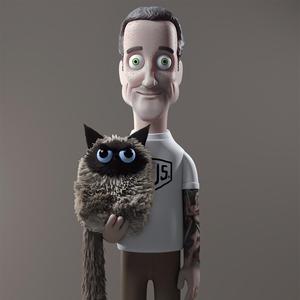 If This Is A Blog Then What's Christmas?
If This Is A Blog Then What's Christmas?
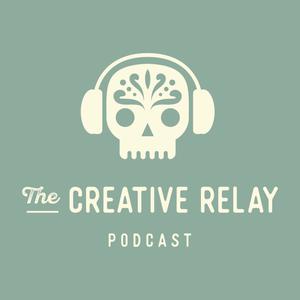 The Creative Relay
The Creative Relay
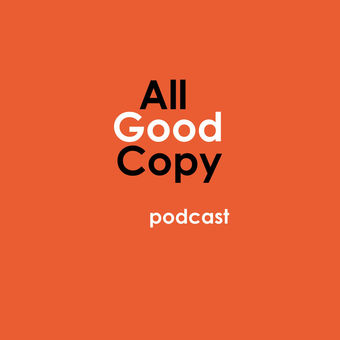 All Good Copy Podcast
All Good Copy Podcast
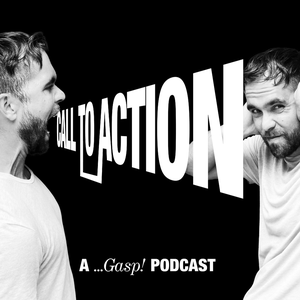 Call To Action
Call To Action
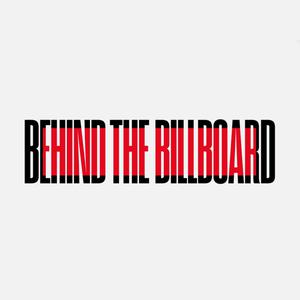 Behind The Billboard
Behind The Billboard